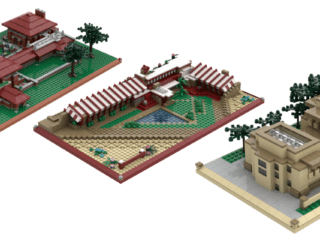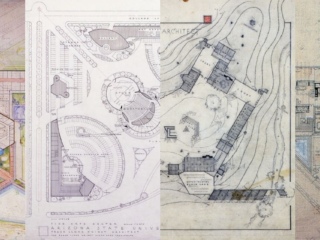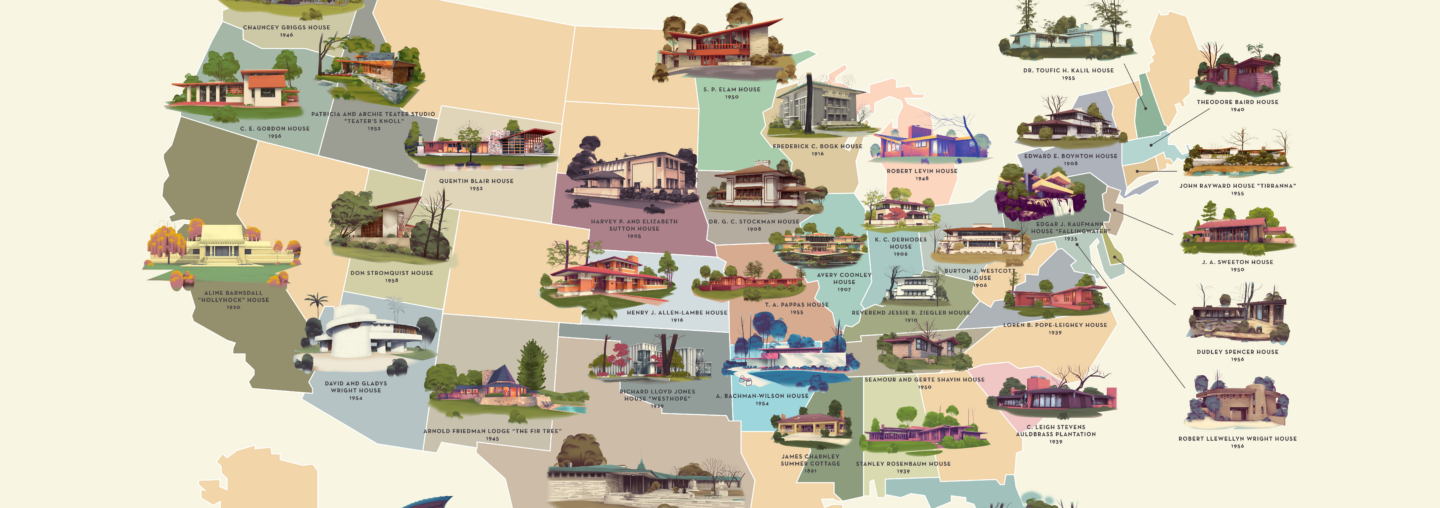
1000Museums x Frank Lloyd Wright Foundation: New Illustrations of Wright-Designed Homes Now Available to Purchase
Frank Lloyd Wright Foundation | Jan 23, 2020
HomeAdvisor recently created illustrations of a Frank Lloyd Wright-designed home from almost every state in the U.S., and a map showing their location, all of which they donated to The Frank Lloyd Wright Foundation. Prints of the map and the individual drawings are now being sold through 1000Museums.com, with proceeds supporting the Foundation. We spoke with HomeAdvisor representatives to learn more about this project and the inspiration behind it.
What was it about Frank Lloyd Wright’s work that initially inspired you to produce and post the series of illustrations to your readers?
Creating our illustrations of Frank Lloyd Wright-designed homes was a must for us, thanks to the fingerprint he left on American architecture. As an organization dedicated to home improvement, we value the timeless beauty and innovation of Wright’s designs, and felt it was important to share his work with others. Wright’s homes are visually diverse and offer narrative value, which made them an ideal choice for this series of illustrations.
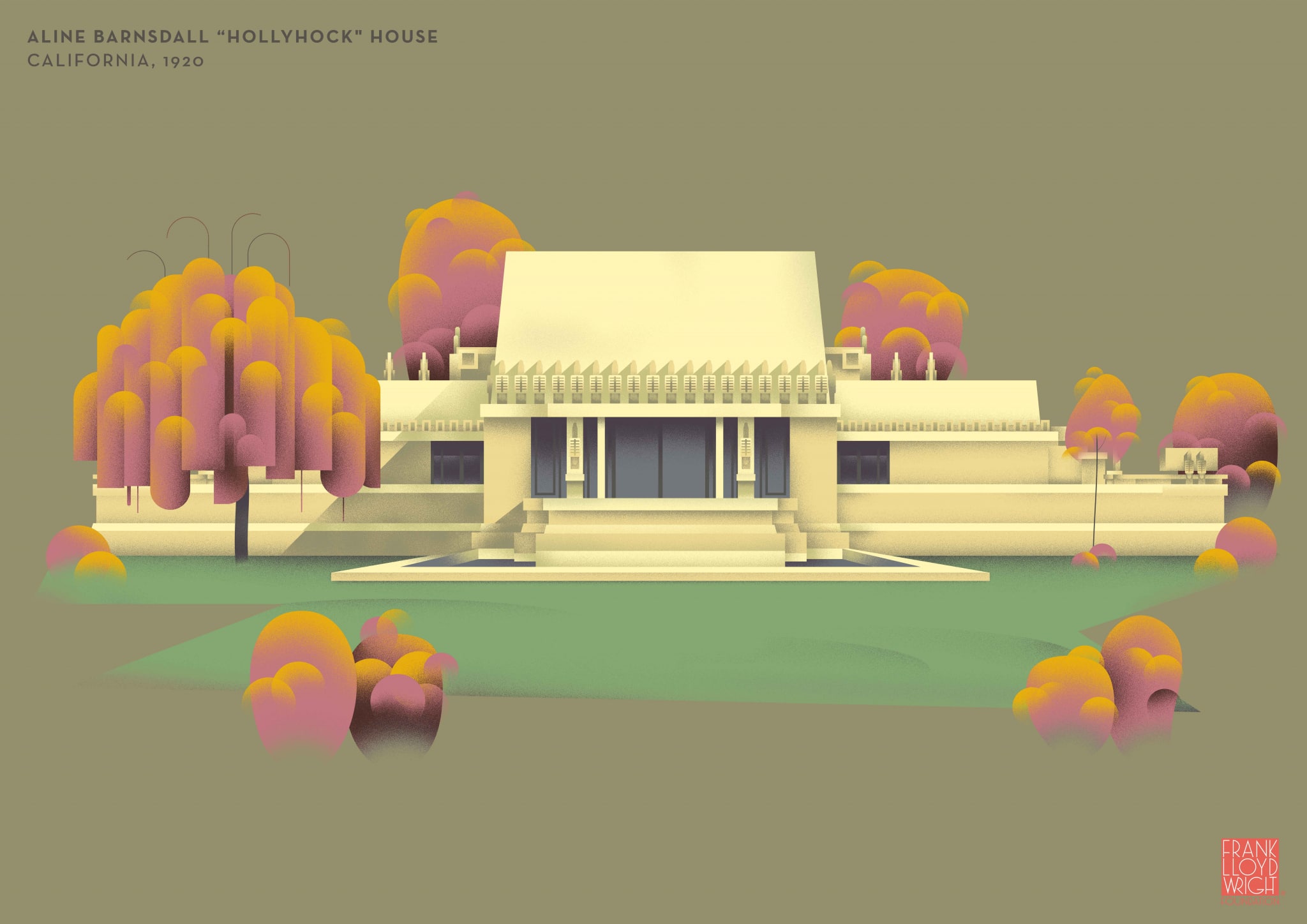
With more than 400 Frank Lloyd Wright-designed buildings still standing today, what criteria did you employ in selecting which of them to include?
Even before we started research for this project, we knew this was going to be a fun challenge. To make our selection, we generated a list of up to three homes in each state (where possible). We selected homes that we felt were visually arresting, had a unique story, and were significant to Wright’s life and career.
Once we had our initial list, we debated the merits of each home. Some of the choices were simple but others required us to make difficult decisions. Ultimately, our final choices came down to one question: Would this home inspire people to learn more about Wright?
How do you think Wright’s “form and function are one” philosophy resonates with today’s homeowners, designers, and architects?
In an ever-changing world, it is more important than ever to create spaces that are long-lasting, functional, and timeless in their design. Wright’s philosophy of “form and function are one” offers a way to create beautiful spaces that meet these goals. His style of organic architecture is particularly relevant today as designers and homeowners search for ways to combine sustainable, organic materials with modern, functional designs.
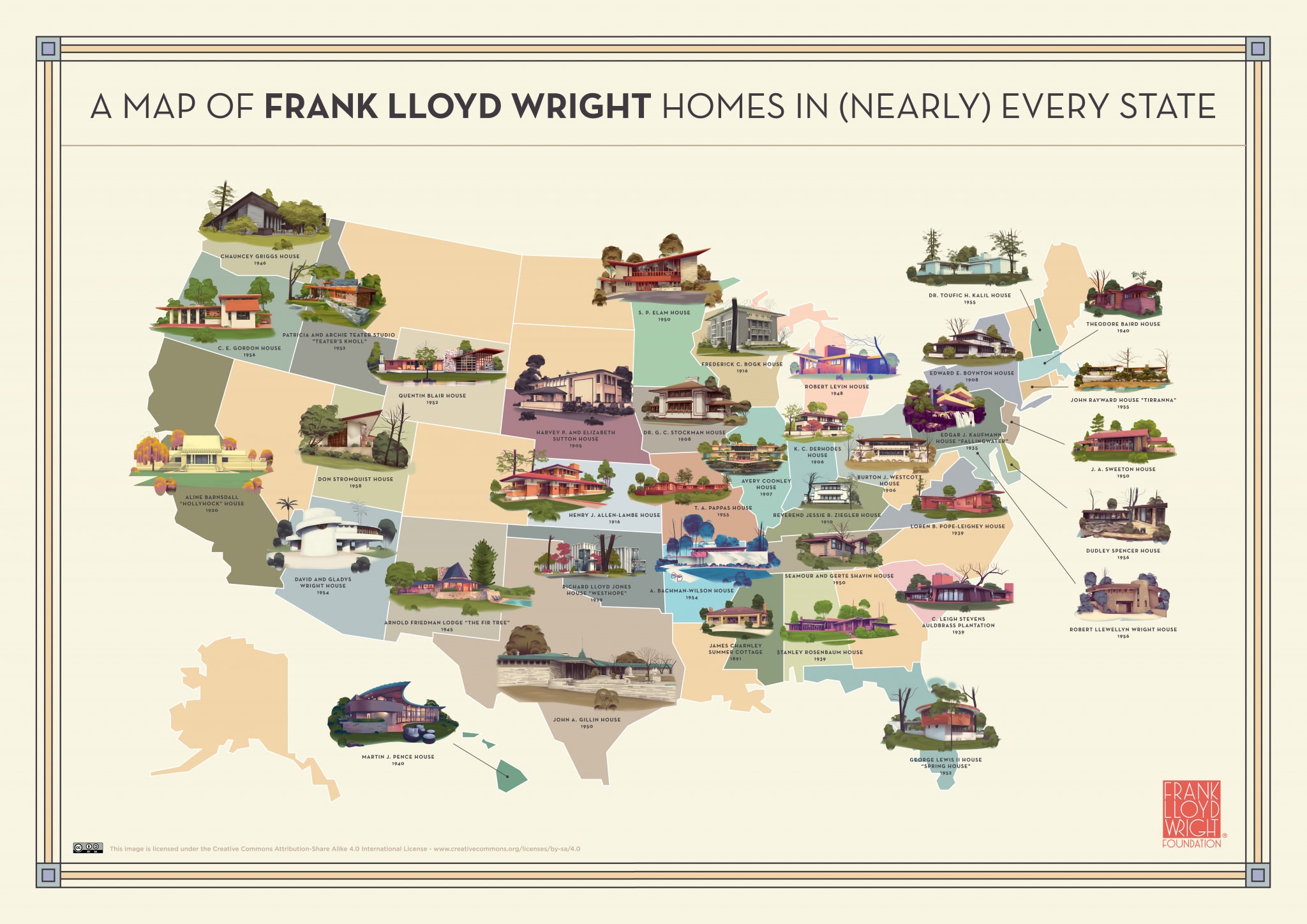
What surprised you the most at your readers reactions to your post?
We were thrilled with the positive responses to our post. Several Wright fans reached out to tell us how much they enjoyed the article – including an architecture teacher! The illustrations seemed to make a lot of fans very happy. And, they even inspired a few home-decorating projects with those who wanted to frame the illustrations for their walls. The recent designation of Wright buildings on the UNESCO World Heritage List is a great honor and should help create even more interest in his work and legacy.
In 1905 Frank Lloyd Wright visited Japan for the first time. He was inspired by the simple horizontality and functionality of the homes and the connection to natural surroundings. Do you see this influence in Wright’s designs?
Wright’s designs reflect Japanese architecture with their clean lines and use of natural materials. And as the world becomes more connected, we see architects and homeowners following in Wright’s footsteps and taking inspiration for home design from cultures all over the world.
From minimalist Scandinavian furniture to intricate Moroccan tiles, homeowners today are excited to include global designs in their own spaces.
If you could live in one of these Frank Lloyd Wright houses, which one would you choose?
Though it’s difficult to choose just one Wright home, Fallingwater tops the list. The picturesque

home blends in organically with its surrounding architecture and sits on top of a running stream. When it comes to curb appeal, that exterior is difficult to beat! And other Wright fans would agree – Fallingwater is one of his most celebrated works.
How did Wright’s early use of unconventional building materials for homes pave the way for future architects to innovate and take risks?
Wright wasn’t afraid to push the envelope when it came to new and unusual building materials. And in today’s world, where sustainable materials and new innovations sit at the forefront of design, his success paved the way for today’s builders and architects to take risks and try new things.

